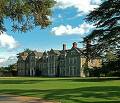James More Molyneux 1805 – 1874
January 18, 2010
 James More Molyneux 1805 – 1874 was a
British aristocrat, Fellow of the Society of Arts, a founder member of
Surrey Archaeological Society,
James More Molyneux 1805 – 1874 was a
British aristocrat, Fellow of the Society of Arts, a founder member of
Surrey Archaeological Society,
Molyneux was a Vice President of the Hahnemann Hospital at 39 Bloomsbury Square, and he was a colleague of Christian Karl Josias Bunsen, James Chapman, Edward Charles Chepmell, Paul Francois Curie, Robert Ellis Dudgeon, Thomas Engall, Joseph Glover, Joseph Hands, Sydney Hanson, Robert Hamilton, Amos Henriques, Henry Kelsall, Joseph Laurie, Henry Victor Malan, James John Garth Wilkinson, David Wilson, William Leaf, George Wyld, Thomas Egerton 2nd Earl of Wilton, Robert Grosvenor, Thomas Roupell Everest, Charles Powell Leslie, David Wilson, William Henry Ashurst, William Thomas Berger, W A Case, J M Douglas, G H Flatcher, John Fowler, Thomas Higgs, T H Johnstone, John Miller, Chas Pasley,Frederick Hervey Foster Quin, Mathias Roth, Frederick Sandoz, W Stephenson, Samuel Sugden, Allan Templeton, Major Tyndale, William Warne, A Wilkinson, S Wilson and many others.
Molyneux lived at Loseley Park, which was built by his ancestor in 1562 at the request of Elizabeth I by William More. Loseley Park has been the family’s seat for five hundred years and three generations of the family still live there today. Loseley Park is available to hire for weddings, functions and public events. Jane Austen’s Emma was recently filmed at Loseley Park.
The More family established itself in Surrey in 1508 when Christopher More (before1483-1549, knighted 1540), the son of a London fishmonger, originally from Derbyshire, completed purchase of the manor of Loseley outside Guildford. More was an Exchequer official and in 1505 purchased the office of ulnager of cloth in Surrey and Sussex.
He subsequently obtained a formal legal training and secured offices in the households of several members of the nobility, including Margaret Countess of Salisbury. More continued to enhance his standing in Surrey through further purchases and consequently was appointed to a large range of offices in county government including those of justice of the peace (from 1522), subsidy commissioner (from 1515) and sheriff of Surrey and Sussex (1539-40). He was clearly seen as dependable by Thomas Cromwell and was returned as one of the two Members of Parliament for Surrey in 1539, being again returned in 1547.
More’s son William (1520-1600, knighted 1576) consolidated the family’s political and material fortunes. He enlarged the estate considerably and rebuilt the house in the 1560s and his reliability and loyalty were clearly valued by Elizabeth I, who visited Loseley on several occasions… ** **
James More Molyneux 1805 – 1874 inherited Loseley on the death of his father James in 1823. Sharing an interest in the Loseley MSS, James became a Fellow of the Society of Arts and a founder member of Surrey Archaeological Society, and published further papers in Archaeologia… he married Caroline Lowndes in 1832 (and they had sons Robert and William and a daughter Henrietta - ?any other children)… (and the Archives include an) exercise book of Caroline S Lowndes, entitled ‘philosophy book’, with essays on magnetism, electricity, galvanism and optics…
The eldest son, William More Molyneux, died 1760. His eldest son James had died the year before. His son Thomas More Molyneux died unmarried in 1776, and left the property to his sisters in succession, and then to James Freeman alias Molyneux, son of Jane Freeman, who was afterwards the wife of Samuel Hill of Duke Street, gentleman.
James, son of Thomas, became owner in 1802, as James More Molyneux, and died 1823. His son James died 1874. William More Molyneux, son of James died 1907.
The Molyneux Archives are held at The National Archive.
Of interest:
William More Molyneux, son of James More Molyneux, attended the wedding of Alfred Duke of Edinburgh,
[Littleton School was built by Mr. James More Molyneux of Loseley in
- It has been recently enlarged](http://www.british-history.ac.uk/report.aspx?compid=42921), and a service is celebrated there on Sundays by a curate of St. Nicholas. It was let to the County Council in 1903. A new school is in course of erection.